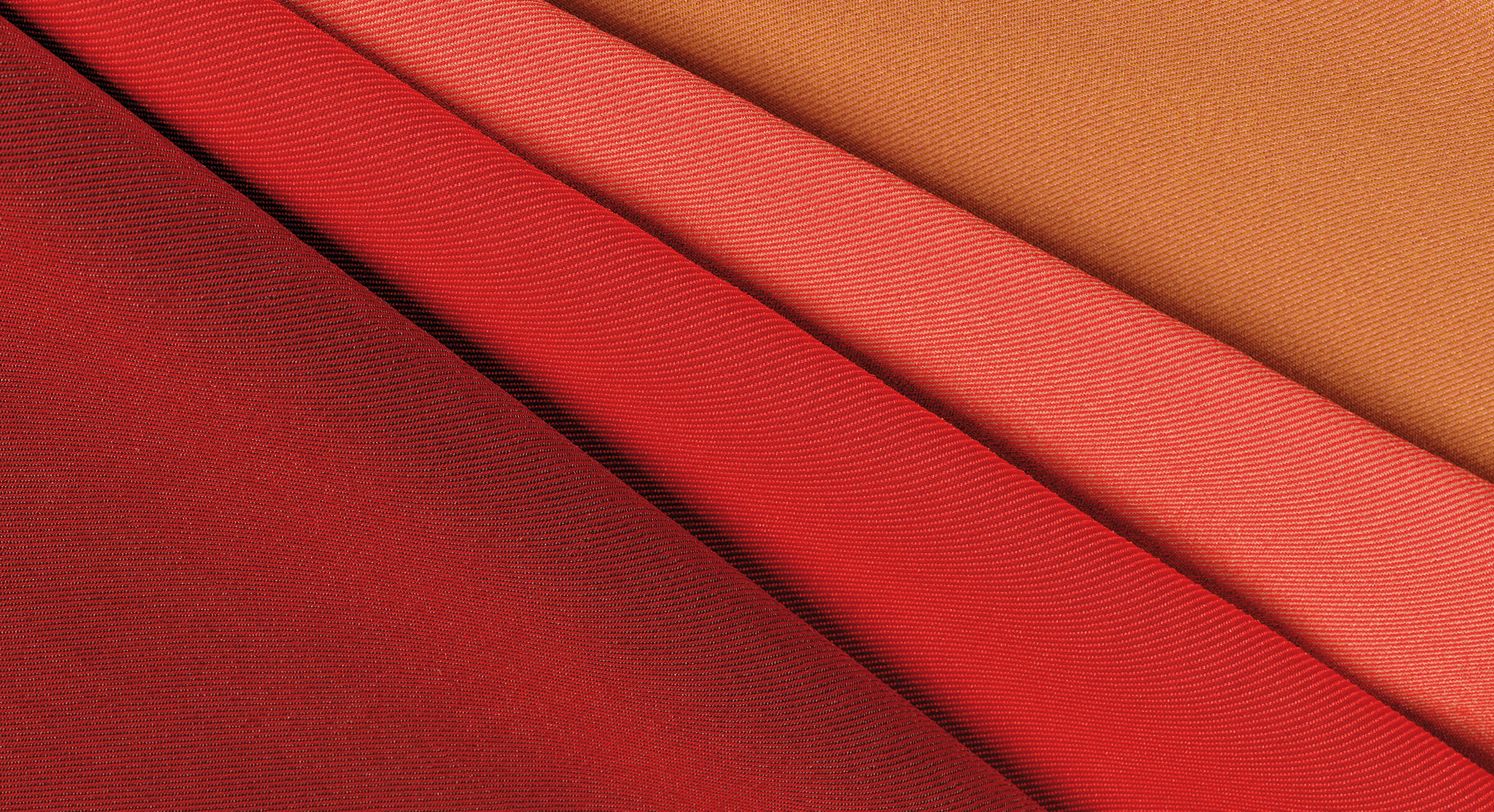
Relate is a sophisticated twill weave upholstery textile designed by Patricia Urquiola made from Trevira CS, which has a soft hand resembling natural fibres.
The versatile palette for Relate comprises
14 colourways and expresses confident colour combinations by combining warm notes withclosely related nuances.
Composition 100% Trevira
Width Approx. 140 cm
Weight per m2 Approx. 328/m2
Lightfastness 5-7 (ISO 1-8)
Shrinking App 2%
Abrasion Martindale 80.000 Martindale
Wash load Half
Pilling 4-5 (ISO 1-5)
Colour Slight differences may occur
Produced in environment Greenguard Certification www.greenguard.org
Fire test AS/NZS 3837 class 2, BS 5852 Crib 5, BS 5852 part 1 with treatment, DIN 4102 B1, EN 1021-1/2, IMO FTP Code 2010 Part 8, NF D 60 013, NF P 92 503 M1, NFPA 701, SN 198 898 5.2, UNI 9177 Classe 1, US 1 Cal. BulI. 117-2013, ÖNORM B1/Q1

Performance
Composition 100% Dyed Acrylic
Grammage (g/m2) 400
Resistant to superficial wetting 100 ISO 24920
Oil resistance 6 AATCC 118
Colour fastness to artificial weathering 7-8 blue scale (8) ISO 105-B04
Colour fastness to light 7-8 blue scale (8) ISO 105-B02
Tensile strength, warp 180 daN/5 cm ISO 13934
Tensile strength, weft 240 daN/5 cm ISO 13934
Tear resistance, warp (daN) 21.0 ISO 4674-1
Tear resistance, weft (daN) 29.0 ISO 4674-1
Abrasion resistance (Martindale) 30,000 cycles ISO 12947-2
Abrasion resistance (Wyzenbeek) 15,000 double rubs ASTM D4157
Cigarette ignition classification Class 1 NFPA 260
Material resistance to ignition without flame Pass CA TB 117
Care
Regular care
Regular cleaning is important in order to keep the upholstery textile looking its best and to prolong its life. Dust and dirt wear down the textile and also reduce its re-retardant properties. Vacuum frequently, ideally every week, at half power where appropriate. Wipe upholstery fabrics made from polyurethane with a dry or moist cloth. May also be vacuum cleaned with a soft brush.
Stain removal
If you act quickly, it is not difficult to remove spills and prevent stains from forming. However, we cannot guarantee complete stain removal. First, scrape off any liquids or hardened residues with a spoon or a scoop before you proceed. Any loose particles must be vacuum cleaned before further cleaning. Liquids must be soaked up with an absorbent napkin or cloth. Remove non-greasy stains by carefully dabbing with a lintfree cloth or sponge wrung out in warm water. Edge marks can be avoided by dabbing gently in circular motions towards the centre of the stain with a clean lint-free cloth. Remove greasy stains by using appropriate detergents or solvents. In all cases, we recommend to test stain-removal agents on an inconspicuous area first, to see if there is any effect on the cover. Make sure to dry the fabric fully before use. It may also be necessary to use a hairdryer to avoid leaving edge marks. This applies especially to microfibre textiles. These tips are purely recommendations and cannot guarantee complete stain removal. In all cases, we recommend contacting a professional dry cleaning. In order to ensure satisfactory results, particularly for large stains, we recommend to contact a professional dry cleaner. It is important to state whether the stain has already undergone treatment.
Characteristics
100% Trevira

 Suitable for indoor use only
Suitable for indoor use only
 60 degree wash
60 degree wash
 Dry cleaning (PCE only)
Dry cleaning (PCE only)
 No thumble dry
No thumble dry
 Iron Ok
Iron Ok